9 to 5: The Musical
“Workin’ 9 to 5, What a way to make a livin’!”
Welcome to the exhilarating world of “9 to 5” where the mundane confines of the corporate grind meet the rebellious spirit of three women determined to shake things up.
Bursting with infectious energy, this musical adaptation of the iconic 1980 film takes you on a hilarious and empowering journey through the trials and triumphs of office life.
With toe-tapping tunes, razor-sharp wit, and a cast of characters you can’t help but root for, “9 to 5” is a riotous celebration of female solidarity, workplace antics, and the enduring quest for equality. Get ready to punch the clock and join Violet, Judy, and Doralee as they turn the tables on their chauvinistic boss and prove that when women unite, anything is possible.

A Guide into the Setting of 9 to 5: The Musical
Book by Patricia Resnick
Lyrics and Music by Dolly Parton
Time/Date: Late 1970s
Genre:
- Full-length Musical
- Contemporary
- Comedy
- Period/Historical
- Romance
- Adaptions (Script & Screen)
Target Audience: PG 13
Duration: 2 hours +
Performance Groups:
- High School
- College Theatre
- Community Theatre
- Professional Theatre
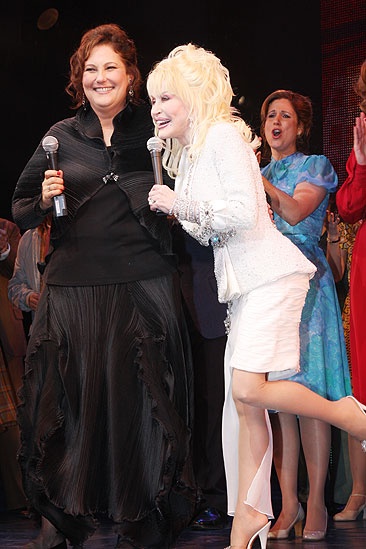
History Behind 9 to 5
Before the musical, there was a TV show. And before the TV show, there was a movie.
And, there is a reason why the “9 to 5” movie was a cult classic hit during the 1980s.
In America, during the 1970s and 1980s, women encountered discrimination alongside a widening pay gap. According to the US Census data, from the 1960s through the 1970s, women consistently earned between 57 to 61 cents for every dollar earned by men. Moreover, there was a significant advocacy movement for the ratification of the Equal Rights Amendment.
Because, during this time, there was an increasing number of women joining the workforce. You would think this would be a good thing. Two-parent households had dual incomes. However, contrary to expectations, wages remained stagnant. The expenses for childcare and housing surged, effectively absorbing any surplus income. Single women faced additional challenges, as many industries imposed an unofficial salary cap, essentially engaging in price-fixing practices regardless of their efforts and dedication.
In the 1980s, children with working mothers became increasingly common, representing more of a norm than an exception. Over a decade, the number of mothers with children under the age of 18 in the workforce surged dramatically, reaching over 17 million, a staggering 44 percent increase compared to 1970.
On top of that, many workplace behaviors and attitudes considered acceptable in the past would undoubtedly shock individuals born after 1980. Instances of outright harassment, overt racism, ableism, and ageism were pervasive.
Working in the corporate world meant being in a situation shared by many friends, with seemingly no prospects for improvement. However, the formation of the 9to5 union and the broader unionization efforts among women transformed this shared predicament into a tool for change. Despite the workplace often seeming like a game dominated by wealthy men, collective action demonstrated that they could alter the rules, and fortunately, they succeeded.
It was in 1980 that the Equal Employment Opportunity Commission (EEOC) issued guidelines explicitly stating that sexual harassment was unlawful. While sexual harassment was technically prohibited under the Civil Rights Act of 1964, it took nearly two decades for the EEOC to provide additional clarification under Title VII, which prohibits employers from discriminating based on race, color, religion, sex, or national origin.
If you would like more information about this part of history, click here or here.
Or watch the documentary “9to5: The Story of a Movement”.
9 to 5 (Film)
“9 to 5” is a classic comedy film released in 1980, directed by Colin Higgins and starring Jane Fonda, Lily Tomlin, and Dolly Parton. The story revolves around three female office workers who join forces to overthrow their sexist, egotistical, and chauvinistic boss.
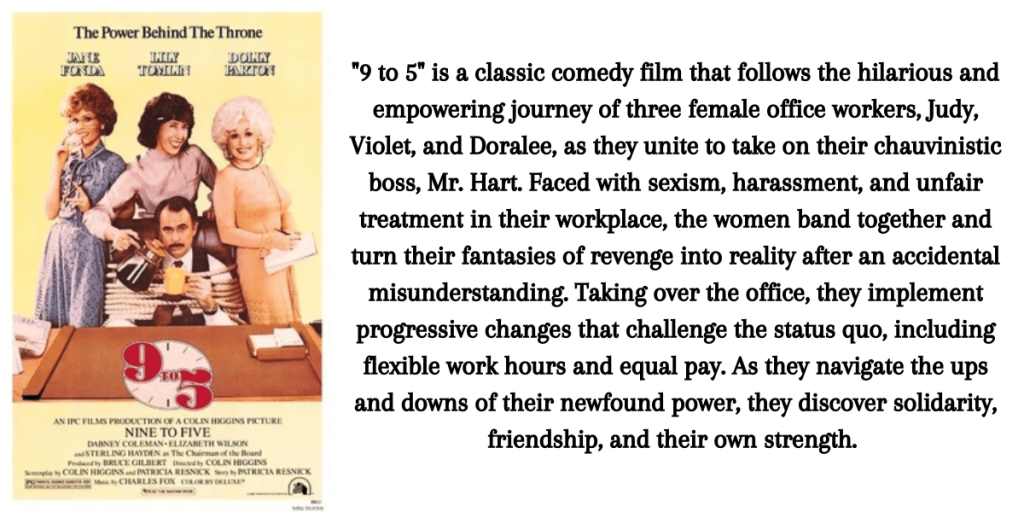
“9 to 5” proved to be a box office sensation, raking in more than $3.9 million during its opening weekend in the United States. It has secured its place as the twentieth highest-grossing comedy film ever. Additionally, it holds the prestigious position of number 74 on the American Film Institute’s “100 Funniest Movies” list.
The film is a humorous yet poignant exploration of workplace sexism and inequality, highlighting the strength and resilience of women in the face of adversity. With its sharp wit, memorable performances, and empowering message, “9 to 5” remains a beloved classic that continues to resonate with audiences decades after its release.
9 to 5 (Song)
During the making of the 1980 film, the theme song was being typed up by Dolly Parton herself.
You see, Jane Fonda and Dolly Parton struck up a deal.
In 1980, Fonda approached Parton to star in her upcoming film “9 to 5”. Despite lacking prior acting experience, Parton agreed to take on the role of Dora Lee under the condition that she could write the theme song. A deal was quickly made. Throughout filming, in the downtime between takes, Parton diligently crafted the iconic song “9 to 5”.
“Well, this is a good opportunity, but I’ll only do it if I can write the theme song.”
Fun Fact
Borrowing the name “9 to 5” from the 9to5 organization and using her nails to sound like a typewriter, the famous song was born for the world to hear and listen to for the rest of time.
“I have acrylic fingernails, and they make a great rhythm sound. They sound almost like a typewriter.”
On November 30, 1980, released just before “9 to 5” premiered in cinemas, Dolly’s country pop anthem quickly became a massive hit.
By the conclusion of January 1981, “9 to 5” ascended to the summit of the US Billboard country charts. Eventually, it claimed the top spot on the overall US Billboard charts, marking Dolly’s sole solo song to achieve this remarkable feat. Additionally, “9 to 5” was included in Dolly’s 1980 album, “9 to 5 and Odd Jobs,” where it served as the album’s centerpiece, despite the fact that the star reverted to her traditional rootsy country sound.
Dolly received an Oscar nomination and garnered four Grammy Award nominations, ultimately winning in the categories of Best Country Song and Best Country Vocal Performance, Female. In 2017, the song went platinum. Overall, there is no denying Parton’s success with “9 to 5.”
If you’ve never watched the film or seen the musical, I bet you have at least once listened to Dolly’s “9 to 5”.
9 to 5: The Musical
After much back and forth, the film was finally adapted into a musical written by Patricia Resnick. Being a part of the process, Dolly Parton wrote almost all of the music and lyrics for the newly adapted story.
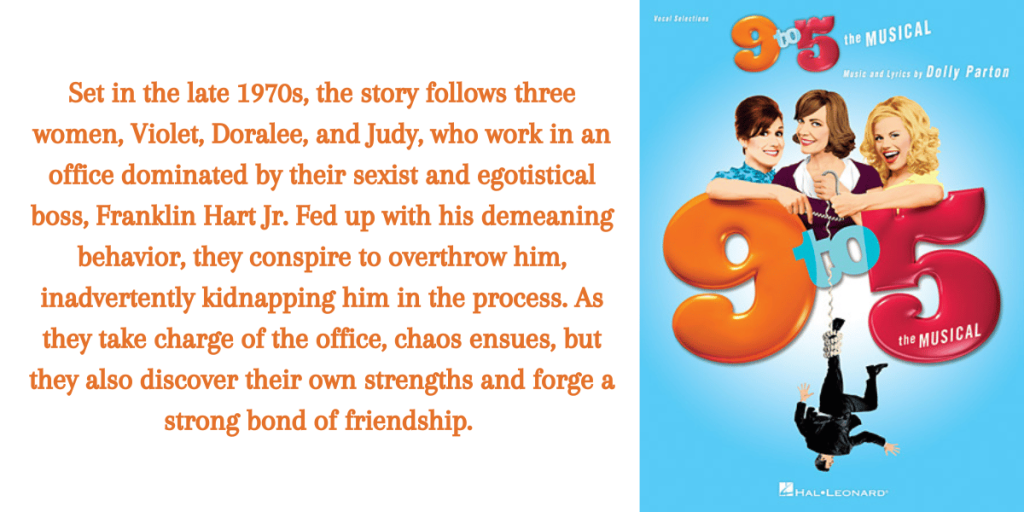
On January 19, 2007, a reading of the musical took place, featuring a cast that included Tracey Ullman, Allison Janney, Megan Hilty, Stephanie J. Block, Norm Lewis, and Marc Kudisch. Following this, a revised draft underwent testing during a week-long workshop starting on June 20, 2007, culminating in an industry presentation held in New York on June 28, 2007.
The musical debuted with a world premiere out-of-town engagement at the Center Theatre Group’s Ahmanson Theatre in Los Angeles, commencing previews on September 9, 2008. The official opening night followed on September 20, with performances running until October 19. It received two Los Angeles Drama Critics Circle Awards, recognizing the Musical Score by Dolly Parton and Choreography by Andy Blankenbuehler.
Given the green light, Previews commenced on Broadway at the Marquis Theatre on April 7, 2009, followed by the official opening on April 30. Under the direction of Joe Mantello, the cast included Allison Janney, Stephanie J. Block, Megan Hilty, Andy Karl, and Marc Kudisch. After 24 previews and 148 regular performances, the production concluded on September 6, 2009 winning the Drama Desk Award for “Outstanding Actress in a Musical” by Allison Janney.
The original Broadway cast recording was produced on May 3 and May 4, 2009, at Legacy Recording Studios in New York. It became accessible via all digital formats, including iTunes, and through Dolly Parton’s official website on July 14, 2009. The hard-copy CD was made available on July 28, 2009, and was released ahead of schedule at the Marquis Theatre on July 2, 2009. Comprising 18 tracks, the cast recording features the entire original score, excluding the Act II entr’acte. Upon the announcement of the Grammy Award nominees on December 4, 2009, the cast recording received a nomination for Best Musical Show Album.
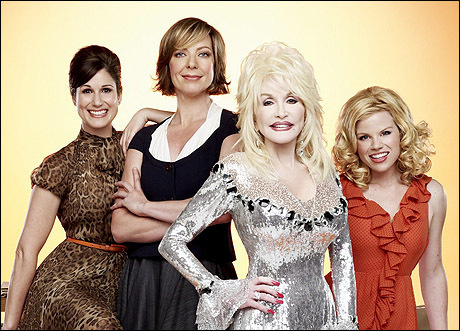
Other Adapations
After the Broadway show closed, several tours were announced and scheduled for years after.
The first US National Tour began in September 21, 2010. In the production, Jeff Calhoun assumed the roles of director and choreographer, leading a cast that starred Dee Hoty, Mamie Parris, Diana DeGarmo, and Joseph Mahowald in the lead roles. The tour lasted for 10 months ending on July 31, 2011.
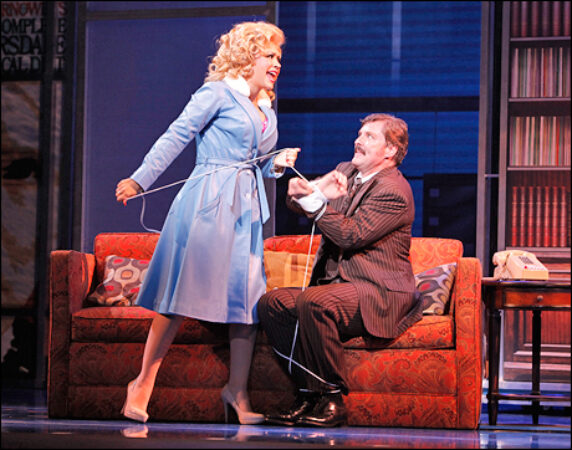
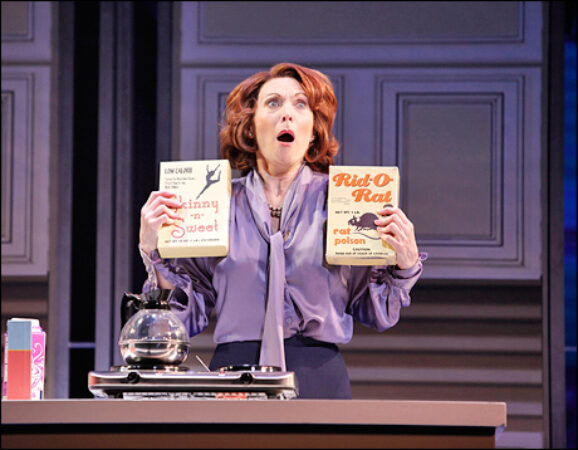
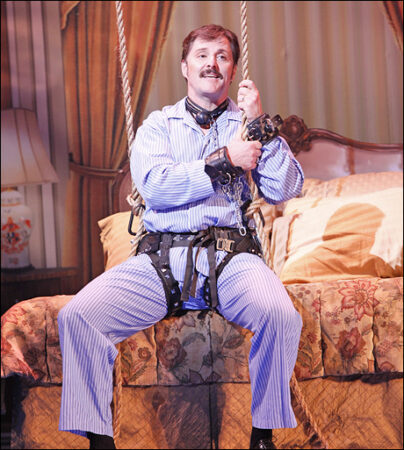

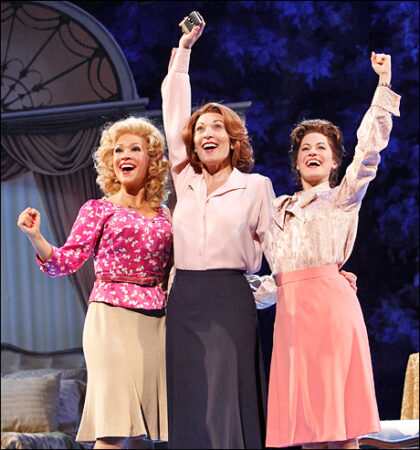
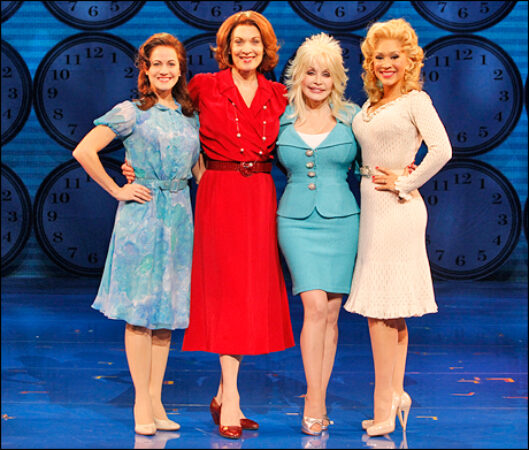
A UK National Tour began running starting on October 12, 2012 and lasted to August 24, 2013. Director Jeff Calhoun made a return to helm the production and leading the cast were Jackie Clune, Natalie Casey, Amy Lennox, Ben Richards, and Bonnie Langford.


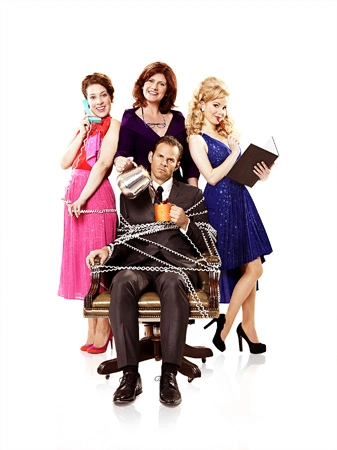
A few years later, West End opened their doors for the musical with the production starring Amber Davies as Judy, Louise Redknapp as Violet, Brian Conley as Franklin, Natalie McQueen as Doralee and Bonnie Langford as Roz.
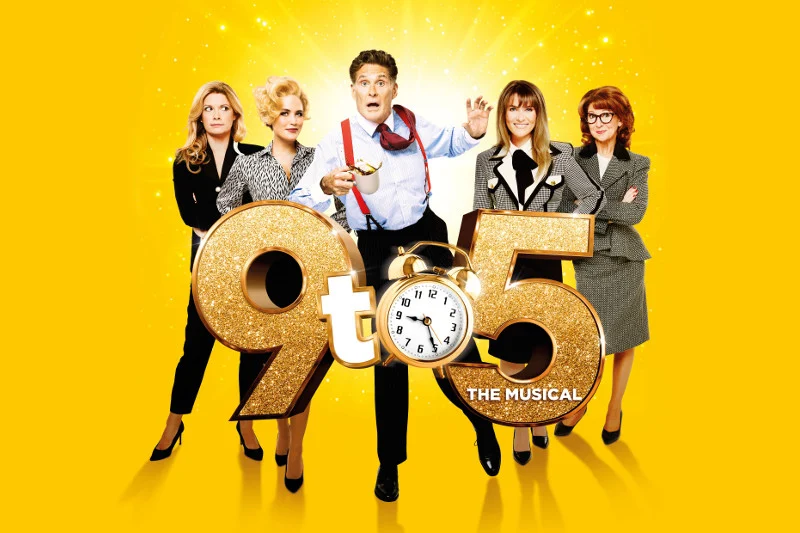
Since then, Australia has done their own national tour in 2022 while the US and UK both did a second national tours through their countries.
Fun Fact: After “9 to 5” the movie was released, a sitcom was aired in 1982 inspired by the events of the film. The show aired on ABC from 1982 to 1983 and in first-run syndication from 1986 to 1988. It starred Dolly Parton’s younger sister, Rachel Dennison, in Parton’s role, while Rita Moreno and Valerie Curtin assumed the roles originally played by Lily Tomlin and Jane Fonda. A total of 85 episodes were filmed.
The Plot of 9 to 5: The Musical
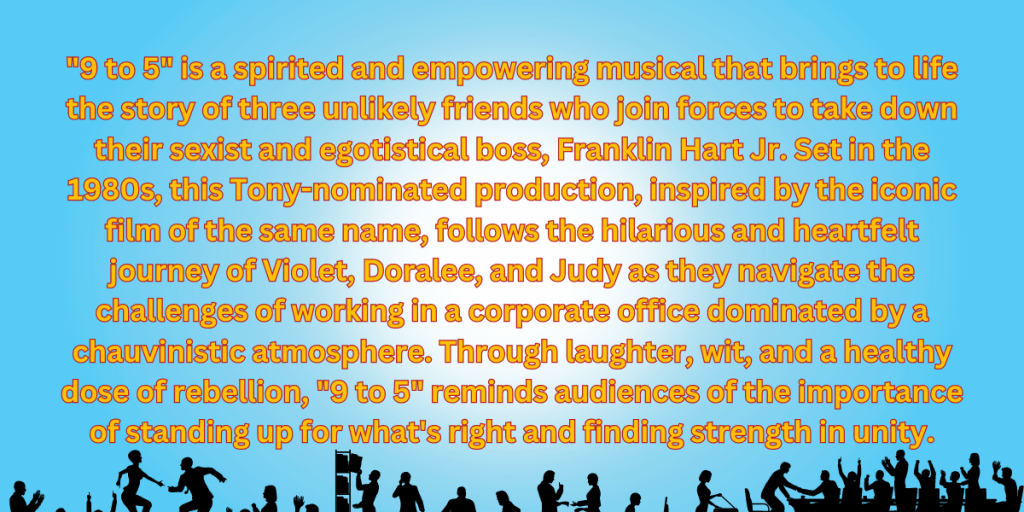
Act 1
As the alarm clocks ring and the workforce stirs, Violet a working mother, Doralee a happy married woman, and Judy a recently divorced young lady brace themselves for another day’s grind in the world of (“9 to 5”). Under the oppressive rule of Franklin Hart, Jr., president of Consolidated Industries, the day unfolds with its usual blend of monotony and misery. Violet and Judy cross paths for the first time, with Judy confiding in Violet about her turmoil finding out here husband is leaving her for another younger woman, explaining her lack of professional experience. Empathetic, Violet takes Judy under her wing, acquainting her with the ins and outs of the workplace and introducing her to the other female colleagues including Doralee (“Around Here”). Their initiation into the workplace hierarchy takes an expected turn when they encounter Franklin Hart, a caricature of corporate arrogance and sleaze. With dismissive commands, Hart assigns them the menial task of fetching his coffee, embodying the epitome of domineering boss behavior.

Doralee enters Hart’s office prepared for dictation, only to find herself the target of his aggressive advances. Despite his persistent flirtations and attempts to coerce her into compromising situations, Doralee resolutely rejects his advances (“I’m Here for You”). Their unsettling interaction is suddenly halted by the unexpected arrival of Hart’s wife, Missy, putting an end to his pursuit in a swift and dramatic manner.
In the bustling Filing Room, Violet and her fellow office mates engage in a lively exchange of gossip. Amidst the chatter, Joe, a junior accountant, musters the courage to ask Violet out, only to face rejection as she harbors insecurities about her age. Meanwhile, in the chaotic confines of the Xerox room, Judy grapples with a mess of scattered papers, drawing the ire of Hart, who harshly criticizes her efforts. Judy’s distress intensifies when her personal turmoil is compounded by the unexpected arrival of her husband bearing divorce papers. Contrastingly, at Violet’s home, Violet finds solace in the mundane task of fixing the garage door, prompting Josh‘s, her son, attempt to ease her stress with a joint. Initially hesitant, Violet eventually accepts, concealing the item in her purse. In the safety of her home, Doralee confides in Dwayne about feeling ostracized by her female colleagues at work, finding reassurance in his reminder of Texan resilience. Despite their individual challenges, a sense of solidarity emerges as they collectively strive to persevere (“I Just Might”).
The next day the secretaries gear up for their lunch break. Maria voices her conviction that male colleagues earn more than their female counterparts while Judy grapples with the relentless demands of the phone bank feeling increasingly overwhelmed. Doralee extends an invitation for lunch, only to be met with reluctance from Violet and Judy. Left feeling isolated and misunderstood, Doralee grapples with her sense of alienation and judgment in the workplace reflecting on her whole life being nothing but a pretty face and nothing more (“Backwoods Barbie”).
Doralee is summoned to Hart’s office under the pretext of fixing his chair, only to be confronted with the shocking revelation that he’s been spreading rumors of an affair between them, explaining her ostracism in the office. The tension escalates as Roz enters, informing Hart of Maria‘s attempt to uncover salary information about their colleagues. Despite Hart’s desire to terminate Maria, Roz advises against it on legal grounds, leading to a frustrated Hart storming off to confront her himself.
Violet, Doralee, and Judy, all visibly distraught by Maria’s abrupt dismissal, gather by the elevators. United by their disdain for Hart, the women seek refuge at Violet’s, where they indulge in a shared moment of rebellion, namely getting high off of Violet’s son’s joint. Fueled by a mix of frustration, fantasy, and pot, each woman envisions a grisly demise for Hart, ranging from femme fatale (“Dance of Death”) to crack rodeo star (“Cowgirl’s Revenge”) to deranged fairytale character (“Potion Notion”). Once he is proclaimed dead, the women celebrate their victory (“Joy to the Girls”).
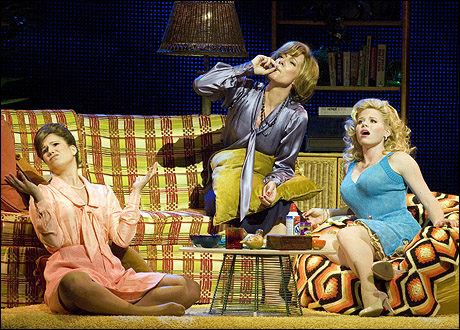
The following day, in the coffee area, Violet vents her frustration to Joe about being tasked with buying rat poison and preparing Hart’s coffee. Amidst their conversation, they share a brief connection. In a moment of distraction, Violet inadvertently pours rat poison instead of sweetener into Hart’s cup. As Hart enters and makes a snide remark aimed at Violet, Joe nearly confronts him. In the midst of the chaos, Violet realizes her error and hurriedly confides in Judy and Doralee in the ladies’ room. After sharing her mistake, they collectively agree to observe the situation unfold. Roz eavesdrops on the entire conversation from a neighboring stall, and with urgency, she hurries to inform Hart of the supposed poisoning. In response, Hart devises a scheme to conceal himself, directing Roz to inform the women that he’s been rushed to the hospital in critical condition. Left alone, overwhelmed yet captivated by Hart’s assertiveness, Roz finds herself caught up in a whirlwind of admiration and complex emotions (“Heart to Hart”).
The women rush to the hospital in search of Hart, fearing the worst after overhearing a police officer discussing a poisoning victim. Assuming it’s Hart, they frantically search for his body. In a desperate attempt to blend in and gather information, Violet dons a doctor’s coat, but their efforts prove fruitless as the body they found isn’t Hart’s body. Returning to the office, they resolve to eliminate any incriminating evidence. While searching Hart’s office for his coffee cup, Doralee is startled by his sudden appearance. Seizing the opportunity, Hart attempts to coerce her with blackmail threats. Fueled by frustration, Doralee takes decisive action, immobilizing him with a phone cord. With Hart subdued, the trio decides to take him hostage in his own home reclaiming control of their circumstances. As they execute their strategy, they voice their grievances with him and their aspirations for change, finding newfound confidence to pursue their dreams (“Shine Like the Sun”). Empowered, the women immobilize Hart with a makeshift harness above his bed, symbolizing their reclaiming of power and agency.
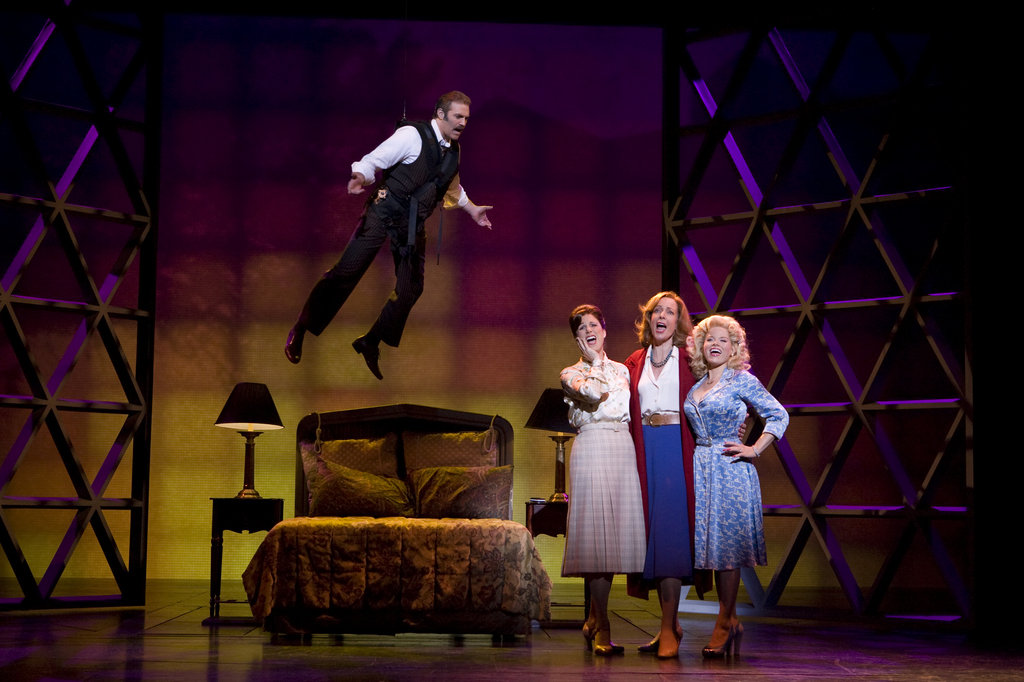
Act 2
Inside Hart’s office, the three women brainstorm strategies to maintain secrecy regarding Hart’s disappearance. Doralee’s talent for forging Hart’s signature emerges as a valuable asset. Judy and Doralee highlight Violet’s newfound role as a Operating Officer within the company. Inspired, Violet drifts into a fantasy, singing about her transformation into a formidable presence akin to the male employees who dominate the corporate hierarchy (“One of the Boys”).
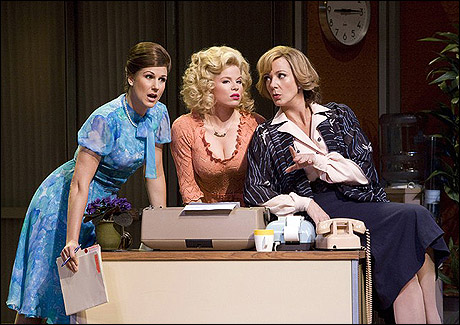
However, their plans hit a snag when Roz becomes suspicious about Hart’s whereabouts. To divert her attention, Judy concocts a scheme to send Roz to a month-long French language seminar in Denver, solely as a means of getting her out of the way. Upon receiving the memo, Roz is left feeling rejected and lonely, believing Hart doesn’t value her, which she expresses in a poignant song (“5 to 9”).
Meanwhile, Hart, still confined in his bedroom, occupies his time watching soap operas. When Doralee brings him a meal, he lashes out, asserting his control and vowing retaliation upon his release. Unfazed, Doralee leaves him to stew in his bitterness. Reflecting on his situation, Hart becomes resentful, attributing his downfall to women throughout history, fueling his anger (“Always a Woman”).
Back at the office, the transformative changes implemented under Hart’s name have noticeably improved the workplace atmosphere easing the burden on the employees including rehab for Margaret, daycare for working mothers and rehiring Maria revitalizing their perspectives on work (“Change It”).
During lunch, Joe comments to Violet about the positive changes in the office, suggesting that someone else must be managing things given the newfound enjoyment he finds in his work. Initially evasive, Violet confides in Joe about the true orchestrator behind the improvements. Joe, impressed by their scheme, offers his assistance with the books but also takes the opportunity to again express his interest in Violet, suggesting they go out together and confronts her about her repeated rejections. Violet explains that she has remained loyal to her late husband, whose passing three years ago has left her hesitant to pursue new relationships. Joe urges her to embrace the possibility of love once more and to open herself up to new opportunities (“Let Love Grow”). Moved by his words, Violet takes a leap of faith, and as they exit the scene hand in hand, she begins to consider the prospect of a new romance.
Later that evening, Judy’s ex-husband, Dick, unexpectedly appears at Hart’s house, seeking reconciliation after being dumped by his secretary girlfriend. Demonstrating newfound strength and self-respect, Judy firmly rejects his advances, asserting her independence and refusing to entertain the idea of returning to someone who once caused her pain. With resolve, she commands him to leave, marking a significant moment of personal growth (“Get Out and Stay Out”).
The following day, Violet, Doralee, and Joe believe they have found all the evidence they need to go against him when Hart storms in holding Judy hostage. Having managed to break free, he now seizes the upper hand. As the group endeavors to extort him, he deftly calls their bluff, poised to involve the authorities. However, before he can make a move, news arrives that Mr. Tinsworthy, the CEO of Consolidated, is paying a visit. Despite their efforts to claim credit for the positive changes, Tinsworthy attributes them to Hart. Violet and her colleagues bravely speak up, but their voices are dismissed. However, a comedic twist unfolds as Tinsworthy appoints Hart to manage the South American branch in Bolivia. In a well-deserved turn of events, Violet is promoted to Hart’s position as President of the company, sparking a jubilant celebration while Roz grapples with the loss of her infatuation.
In the epilogues, the characters reflect on their post-story journeys: Hart’s mysterious disappearance in the jungles of Bolivia, Roz finding love with Hart’s wife, Violet and Joe enjoying three decades of happiness together, Doralee thriving as a successful country singer in Nashville, and Judy finding fulfillment as a bestselling author and television personality (“Finale: 9 to 5”).
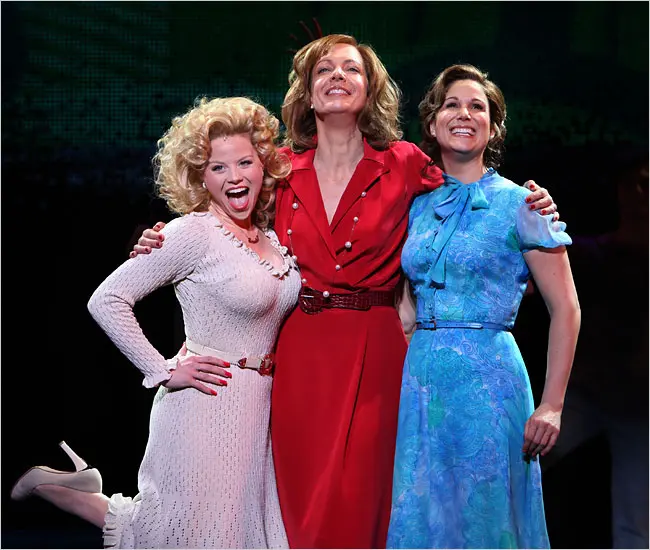
The Cast of Characters
The Lead Characters
Violet Newstead – As the Head Secretary of the company and Mr. Hart’s Administrative Assistant, she juggles her roles as a single mother while consistently advocating for her beliefs. With aspirations to advance within the company, she embodies a no-nonsense attitude, driven by her determination to climb the career ladder. A formidable figure, Violet exemplifies strength and independence, unyielding in her resolve to assert herself and uphold her principles. Attractive, strong, ambitious.
Age Range: 40 to 50
Vocal Range: F3 to C5 (Alto)
Dance: Dancer
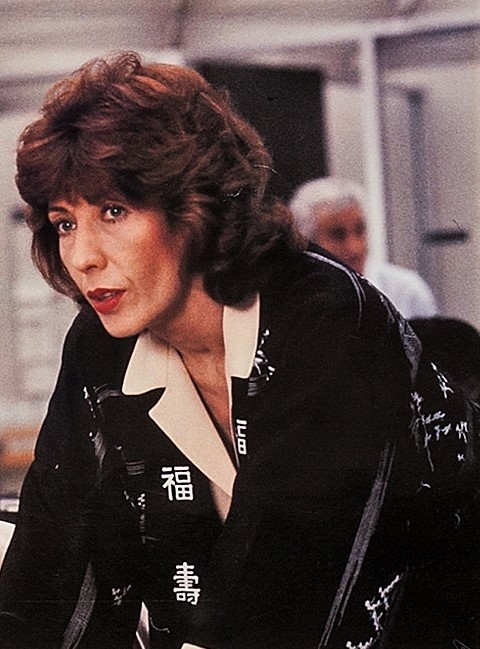
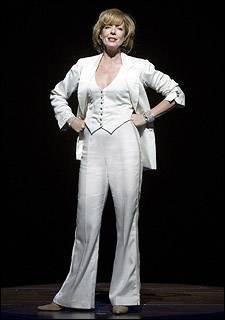

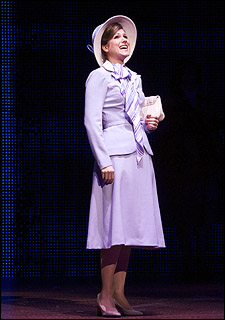
Judy Bernly – A newcomer to the workforce. Is navigating a fresh chapter following her recent divorce. Driven by a steadfast determination to thrive in her newfound role, she endeavors to carve out her niche in this unfamiliar professional landscape and chart her own path in the world. Insecure, determined, and hopeful.
Age Range: 30 to 35
Vocal Range: F3 to F5 (Mezzo-Soprano, Belter)
Dance: Dancer
Doralee Rhodes – A young, sexy spitfire who serves as Mr. Hart’s secretary, adept at handling his inappropriate behavior. Relocating from Texas to join Consolidated, she takes pride in her fashionable appearance, which doesn’t sit well with her female colleagues. Despite this, Doralee exudes strength, always seeking the positive in others and readily assuming leadership responsibilities when necessary. She is proof that there is more to a woman than just her looks.
Age Range: 20 to 30
Vocal Range: E3 to D5 (Mezzo-Soprano, Belter)
Dance: Dancer
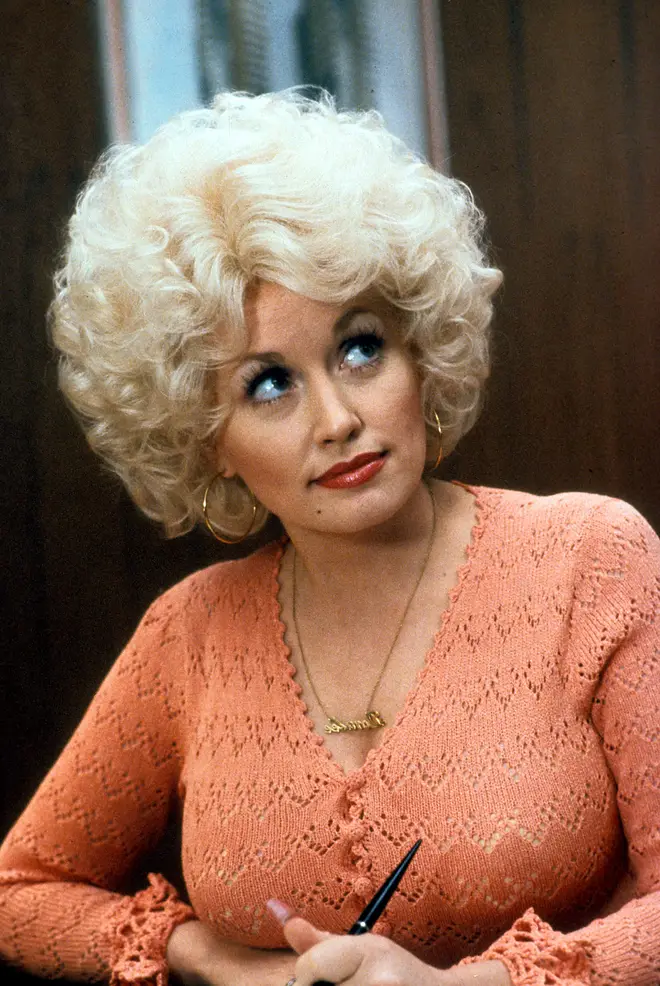
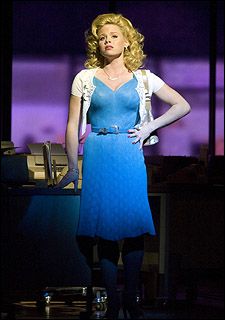
The Villian

Franklin Hart Jr. – A high-ranking executive within the firm, he is infamous for his chauvinistic attitudes. While occasionally capable of feigning charm, his true nature often reveals him as an arrogant, self-absorbed boss. Sexist, egotistical, lying, and hypocritical bigot.
Age: 45 to 50
Vocal Range: C3 to G4 (Baritone)
Dance: Mover
The Supporting Characters
Roz Keith – She’s the observant snitch of office gossip and a notorious informant. With an unreciprocated affection for Mr. Hart, she’ll go to great lengths to earn his favor.
Age Range: 35 to 45
Vocal Range: E3 to B4 (Alto, Belter)
Dance: Mover
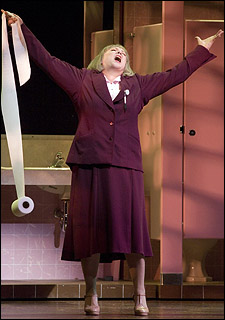
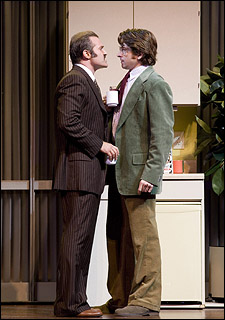
Joe – An attractive office accountant who exudes authenticity and kindness. He’s captivated by Violet.
Age Range: 30 to 35
Vocal Range: B2 to G4 (Tenor)
Dance: Mover
The Minor Characters
Office Workers:
- Maria Delgado – A youthful and energetic secretary in Mr. Hart’s office.
- Margaret – A secretary in Mr. Hart’s office known for her tendency to drink.
- Kathy – A secretary in Mr. Hart’s office known for her tendency to gossip.
Family Members of the Protagonists:
- Josh Newstead – Violet’s teenage son who is a bit too involved in his mother’s love life.
- Dick Bernly – Judy’s soon-to-be ex-husband. An average guy who made too many mistakes and realized them a little too late.
- Dwayne Rhodes – Doralee’s handsome husband, who provides unwavering support for her career ambitions.
- Missy Hart – The wife of Franklin Hart, unaware of her husband’s real character.
Other:
- Russell Tinsworthy – The boss of Franklin Hart and Chairman of the Board. A discerning individual, he might be more aware of Hart’s behavior than he reveals.
Chorus
Office Workers
Violet’s, Judy’s, and Doralee’s fantasty characters
Police Officers
Hospital nurses and doctors
Exploring the Music, Lyrics, and Dance of 9 to 5: The Musical
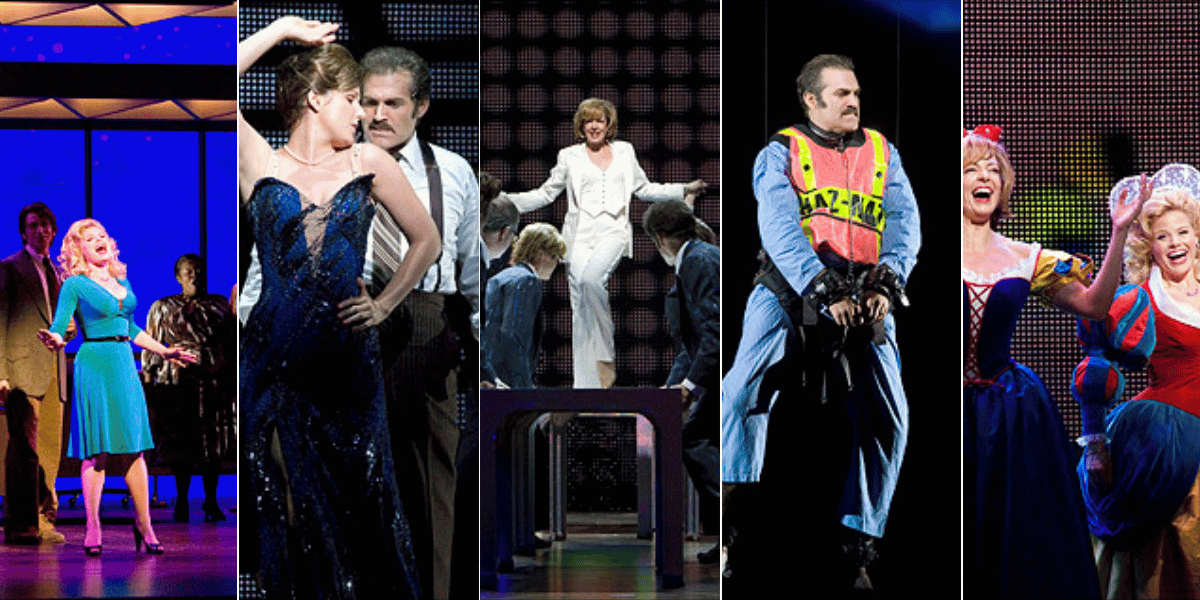
Musical Style: Contemporary, Country
Dance Requirements: Moderate
Vocal Demands: High
Orchestra Size: Medium
Chorus Size: Medium
Act 1
| Song | Characters |
| 9 to 5 | Violet, Doralee, Dwayne, Judy and Ensemble |
| Around Here | Violet and Ensemble |
| Here for You | Franklin |
| I Just Might | Judy, Doralee and Violet |
| Backwoods Barbie | Doralee |
| The Dance of Death | Judy, Franklin and Ensemble |
| Cowgirl’s Revenge | Doralee, Franklin and Ensemble |
| Potion Notion | Violet, Franklin and Ensemble |
| Joy to the Girls | Judy, Doralee, Violet, Franklin and Ensemble |
| Heart to Hart | Roz and Ensemble |
| Shine Like the Sun | Doralee, Judy and Violet |
Act 2
| Song | Characters |
| One of the Boys | Violet and Men’s Ensemble |
| 5 to 9 | Roz |
| Always a Woman | Franklin and Men’s Ensemble |
| Change It | Doralee, Violet, Judy and Ensemble |
| Let Love Grow | Joe and Violet |
| Get Out and Stay Out | Judy |
| Finale: 9 to 5 | Company |
Historical Context
“9 to 5: The Musical” with music and lyrics by Dolly Parton and book by Patricia Resnick, is based on the seminal 1980 hit movie. Because Parton was involved in the cult classic film and also created the famous theme song “9 to 5”, she was asked to be a part of the creating process for the musical.
Even having never composed and written for a broadway musical, Parton was thrilled to embarked on the creation of this musical adaptation. The musical underwent its initial table reading in 2007, followed by a trial run in Los Angeles the following year.
Despite learning a whole new side of composing music, Parton loved the challenge. She had a specific view for the musical based on what she knew about the story and the characters.
“I wanted it to be all that it could be…I wanted it to be what the story called for. I wanted each song to fit each character perfectly and fit the story line, as well and to have the songs to be singable and memorable.”
Parton, alongside Resnick, weave together a rich tapestry of new songs and scenarios, expanding upon the film’s narrative to encapsulate the essence of proto-women’s liberation in the 1980s. Through the characters of Violet, Judy, and Doralee, they portrayed a spectrum of empowerment: Violet demonstrates self-sufficiency doing her job and serves as a role model for her son despite professional setbacks, Judy decisively rejects her straying husband’s return, embracing independence and fulfillment through her work, and Doralee asserts her multifaceted identity beyond her appearance.
“Once I got into it, I found I have a little knack for it because I’ve always loved telling stories… When you write for commercial radio, you have to keep it around three minutes and limit it to a couple verses and a chorus. But writing for the stage, I could just let my mind go.”
Throughout its performances in Los Angeles and New York, the musical accumulated an impressive total of 15 Drama Desk Award nominations and received four Tony Award nominations, one of which was for Best Original Score.
The “9 to 5: The Musical (Original Broadway Cast Recording)” features a collection of 18 tracks performed by the talented cast. Released on Dolly Records on July 14, 2009, the soundtrack received acclaim and earned a Grammy nomination for Best Musical Show Album.
Musical Journey
Parton’s songs lend the production a vibe more akin to a jukebox musical than a traditional comedy. Her heartfelt country tunes resonate effectively, particularly in amplifying the emotional impact of pivotal plot developments that require an extra push to captivate the audience.
Parton’s music and lyrics exude genuine enthusiasm, and the overall score is quite commendable. “9 to 5,” the initial song heard in both the movie and the musical, serves as the opening number and recurs throughout the production to bridge scenes. Surprisingly, the musical’s primary focus is indeed its music, offering a steady stream of lively production numbers, poignant solos, and harmonious trios. Fortunately, the entire cast rises to the occasion, showcasing their talent, competence, and infectious energy, making for an enjoyable viewing experience.
Fun Fact
“9 to 5” employs a rock ensemble comprising keyboards, guitars, bass, drums, percussion, two woodwind musicians, two trumpeters, and a trombonist.
Several songs were cut before the production went to Broadway:
- “Out of Control” – This song unfolds during the moment when Judy is operating the Xerox machine. It commences once Violet departs, leaving Judy to operate the machine after brief instructions. Throughout the song, Judy gains a sense of assurance that she’s mastering the task. However, chaos ensues as the machine unexpectedly goes haywire, with papers scattering everywhere. This sequence is depicted in the current rendition of the musical.
- “Tattletales” – In this song set in the office cafeteria scene, Judy joins Violet and the other girls for lunch. They press Judy to share her story, but she hesitates. Kathy encourages her to open up, prompting cafeteria patrons to share their own gossiping experiences. Suddenly, Doralee enters wearing Judy’s scarf, adding to the rumor mill as the girls continue spreading tales.
- “9 to 5” (Reprise) / “The One I Love” – In the final rendition of the show, a song titled “I Just Might” spans the scenes originally occupied by “9 to 5” (Reprise) and “The One I Love”. The “9 to 5” (Reprise) portrays consolidated employees departing for home at 5 PM, reflecting on their taxing day. Following this, “The One I Love” unfolds, featuring each woman in domestic settings, engaging with either their spouses or children. Judy candidly admits her lingering affections for her ex-husband Dick, Violet bonds with her son, and Doralee reconnects with her husband.
- “I Killed the Boss!” – In this song, while at the hospital, Judy, Violet, and Doralee overhear a doctor informing someone that “he is dead.” Misinterpreting the situation, Violet becomes overly dramatic, believing the doctor is referring to Franklin. She frets that her actions, including placing rat poison in his coffee, have inadvertently led to his demise.
- “Mundania” / “Mundania” (Reprise) – The song conveys a similar message to “Always a Woman,” which replaced these tunes. Franklin grows increasingly bored and frustrated with the trio of girls as they surround him. Eventually, he becomes fed up and escapes.
- “Willin'” / “Well-Oiled Machine” – “Change It,” which carries the same essence, replaces this song. The employees find themselves perplexed and uneasy amidst Mr. Hart’s incessant changes, prompting the girls to encourage them to maintain their teamwork and solidarity.
Unpacking the Themes of 9 to 5: The Musical
These messages convey basic feminist principles, yet their resonance in a Broadway-bound production carries a hopeful cultural significance. The musical’s exaggerated portrayal allows for easy and enjoyable alignment with the heroines and condemnation of the villain.
In 9 to 5, women take center stage with strong leading roles while the male characters are relegated to the sidelines. Even Hart, the main male character, finds himself incapacitated for much of the second act, expressing frustration through grunts and curses at his predicament. Violet’s love interest, Joe, though well-meaning, barely leaves an impression except for a few obligatory duets. While he aids Violet in gathering evidence against Hart, their relationship is depicted with only subtle displays of affection. Violet’s son serves primarily as a conduit for marijuana, which facilitates the trio’s bonding and moral loosening. Doralee’s husband, meanwhile, appears only a few times, strumming his guitar as he listens to her grievances about her coworkers.
Instead of focusing on male characters, the show highlights the camaraderie and empowerment of three women who bond over shared experiences. As Hart remains incapacitated, they take charge, initiating positive changes in their workplace under his guise. Implementing job-sharing arrangements allows working mothers to create flexible schedules, while introducing a substance-abuse treatment program supports a colleague in recovery. They also encourage staff to personalize their workspaces, injecting color and vitality into the dreary corporate environment. The resulting increase in employee satisfaction boosts productivity, attracting the attention of the board chair. This leads to Hart’s promotion, albeit to a distant location, and ultimately secures Violet the career advancement she rightfully deserves.
While the musical suggests that female executives would bring a different approach, this notion may seem outdated. Many women now navigate traditional corporate paths, and progressive companies are founded and led by men as well. However, the nostalgic embrace of 1980s liberal feminism imbues 9 to 5 with enjoyable entertainment and a non-threatening political backdrop.
A Visual Feast: Set Design, Costumes, and Choregraphy
Compared to screen-to-stage adaptations like “Legally Blonde”, which dazzled audiences with vibrant costumes and seamlessly transitioning sets, the musical rendition of “9 to 5” falls short in terms of visual spectacle. Adapting the office environment into a dynamic stage setting presents unique challenges, with the need to navigate around desks, chairs, and other office fixtures.
Andy Blankenbuehler, the choreographer, directs the dances around the trap door featured on the stage, a large square opening that reveals itself when one section of the set descends beneath the stage to make way for another. Throughout the production, the possibility of someone misstepping or mistiming their movements and tumbling into the void below was an possible thing. The mechanism of the trap door unfolds the floor slowly and methodically each time it closes, disrupting the otherwise lively pace of the production. As the cast navigates around what feels like a sinkhole at center stage, one can’t help but wonder if Broadway’s more advanced technology could mitigate this scenic challenge.
Unfortunately, the set design feels cumbersome, with frequent shifts between locations like Hart’s office, the typing pool, the cafeteria, and even Hart’s bedroom, creating a busy and distracting atmosphere onstage. While these varied settings added depth to the movie, they translate less smoothly to the stage, detracting from the overall experience.
This dynamic production is tailor-made for a sizable ensemble, predominantly female, yet also offering chances for skilled male dancers to shine. Boasting a lively score and characters that resonate with audiences, “9 to 5” proves to be an excellent choice for community theaters seeking an engaging and relatable performance.
Broadway Buzz: 9 to 5: The Musical
Despite its grand scale and prestigious cast, “9 to 5” had faced a lukewarm reception from the theater community. Critics have offered middling reviews, and it notably missed out on a Best Musical nomination at the Tony Awards. However, the production has found favor among audiences.
“Goofily entertaining.”
– New York Post
“Fresh and original… bouncy and big-hearted songs.”
– New York Daily News
“A nostalgic crowd-pleaser.”
– Variety
“The film’s translation to the Broadway stage is such a triumph.”
– The Guardian
Conclusion
While “9 to 5” may not present a deeply complex narrative, it offers an uplifting celebration of girl power and, ultimately, women’s rights. Its buoyant and optimistic tone lends itself well to the stage, making for a fairly effective translation of its cheerful, happy-ending story.
“9 to 5 the Musical” has managed to remain relevant in a society that has undergone significant changes since the 1980s. However, adapting the show for the stage presents notable challenges. The first act, in particular, suffers from excessive length, partly due to three superfluous dream sequences where the characters fantasize about dealing with their boss. These sequences, poorly staged, detract from the more compelling plot developments. Moreover, the production faces the daunting task of managing around 30 scene changes within its 2½-hour runtime, which often felt even more numerous due to the darkening of the theater as set pieces were moved in and out. While the director skillfully stages scenes and elicits strong performances from the cast, alternative solutions to the frequent location shifts could have been explored. Additionally, the stage design, while functional, lacked visual intrigue. Streamlining these transitions could enhance the overall pacing and maintain the momentum of what is otherwise an enjoyable evening’s entertainment.
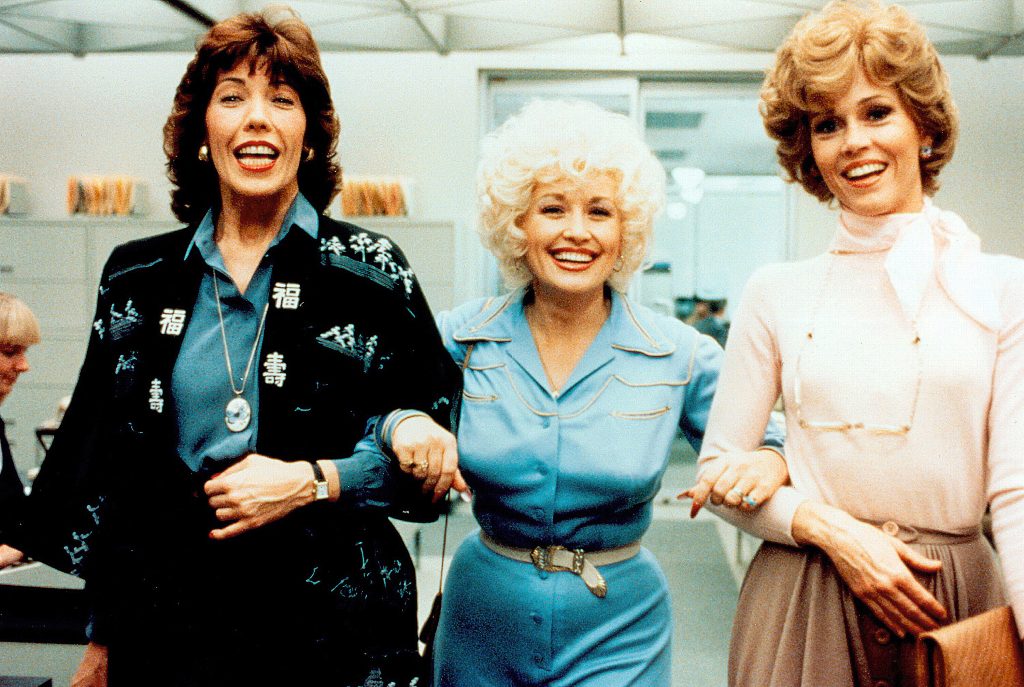
Thankfully, the captivating performances by the cast, along with expert musical direction and delightful choreography, ensured the evening remained engaging. Overall, “9 to 5 the Musical” proves to be an entertaining and approachable production, appealing to audiences and skillfully addressing pertinent social issues with wit and charm.
For what it’s worth, “9 to 5” offers a delightful journey into the world of musical theatre. Helmed by Joe Mantello, known for his work on productions like “Wicked” and “Assassins,” and featuring choreography by Andy Blankenbuehler, recognized for his contributions to “In the Heights” and other notable shows, the production boasts a script penned by Patricia Resnick, who co-wrote the original movie. With music and lyrics by Dolly Parton herself, the musical sparkles with Broadway glamour while staying true to the warm, playful essence synonymous with the legendary Nashville artist.
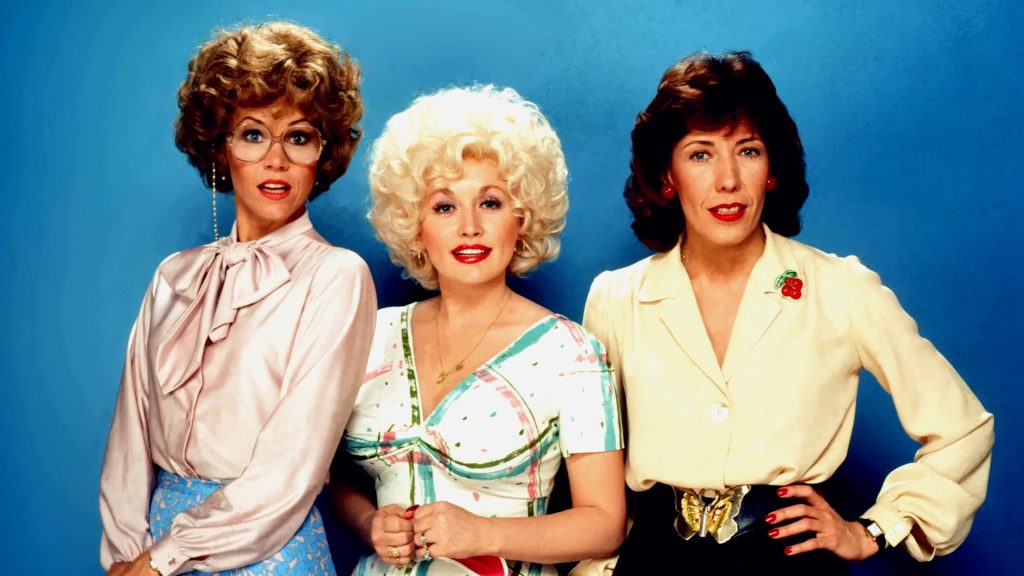
The trio of leading ladies—Allison Janney portraying Violet, Megan Hilty embodying Doralee, and Stephanie J. Block as Judy—exhibit remarkable talent, seamlessly fitting into their respective roles. Janney adeptly captures the comedic essence of Violet, while Hilty and Block showcase their Broadway-worthy vocal prowess. Together, they form a formidable trio on stage. Marc Kudish’s portrayal of Mr. Hart, the detestable character audiences relish in despising, is also a spot-on casting choice.
“9 to 5: The Musical” offers a vibrant theatrical experience, perfect for those seeking an escape into the world of Broadway without a deep affinity for theater. It’s whimsical, delightfully unpretentious, and brimming with sheer entertainment value. While it may seem simplistic and overly flashy, it still manages to deliver an enjoyable evening for those craving a dose of upliftment. Sometimes, pure enjoyment is exactly what one needs.
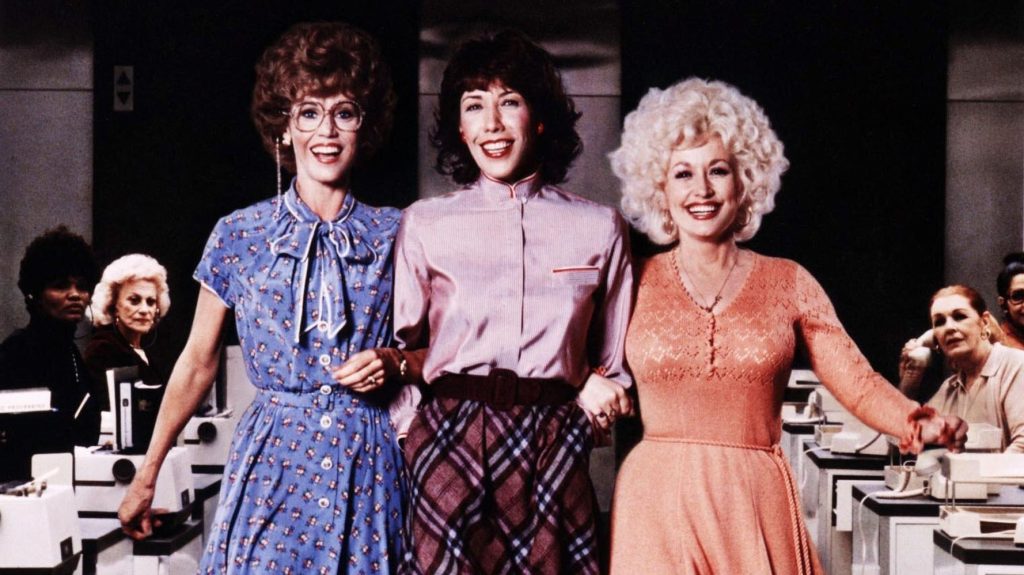
Sources
The following is where I got my information from:
- Music Theatre International
- Theatre is Easy
- The Contemporary Theatre of Ohio
- Dolly Parton
- StageAgent
- The Feminist Spectator
- Berkshire on Stage
- Smooth Radio
- American Songwriter
- Pop Dose
- Playbill
- Broadway
If you would like more information on the 9to5 movement, here are some resources:
9 to 5: The Musical FAQ

About the Author
Kim M.
I am a 20 something year old who enjoys a peaceful life in the country while simultaneously living for the drama in the stories I find myself reading everyday. Before my life in the quiet countryside, I lived a life of full of chaos and drama in the world we called musical theatre.


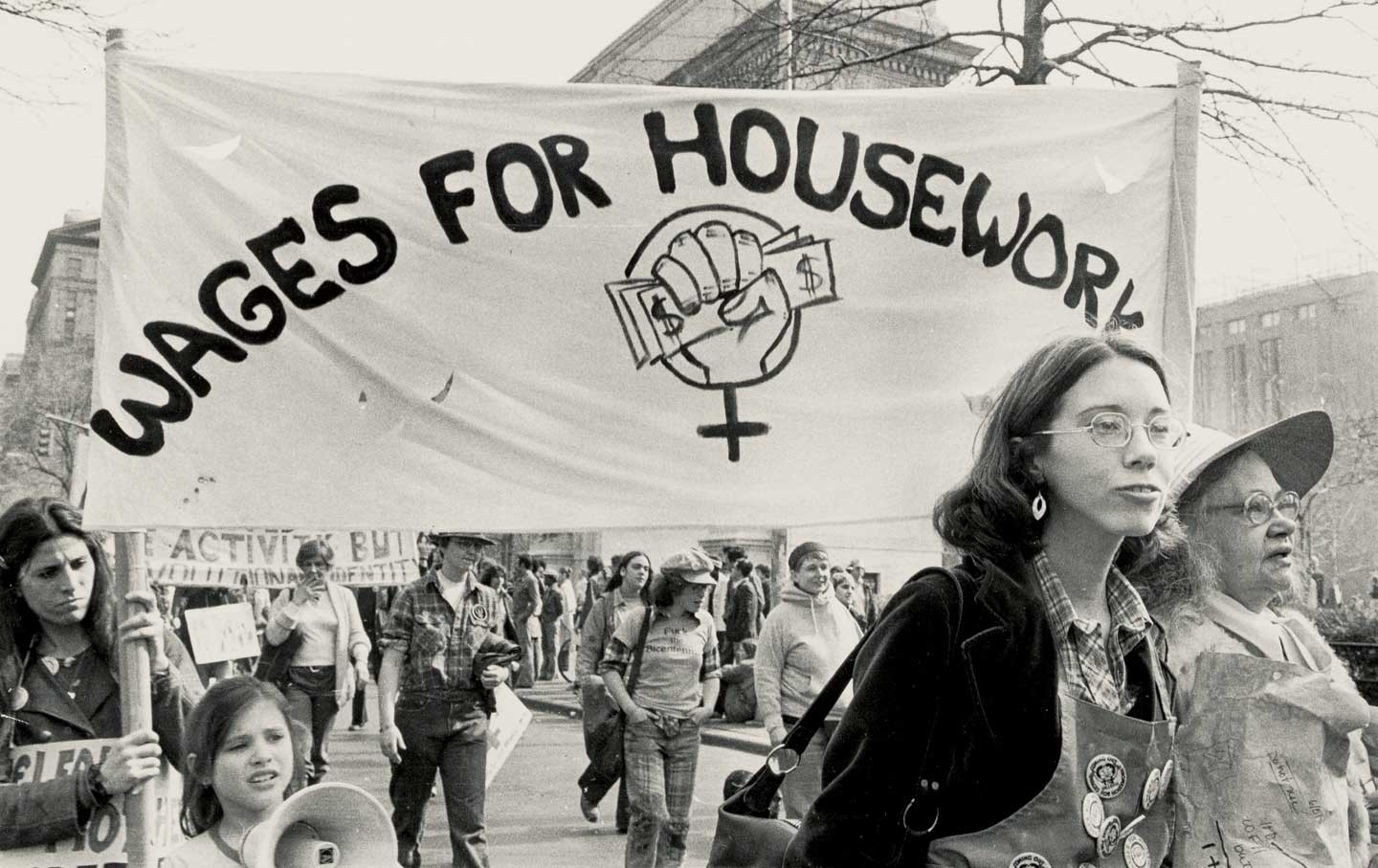
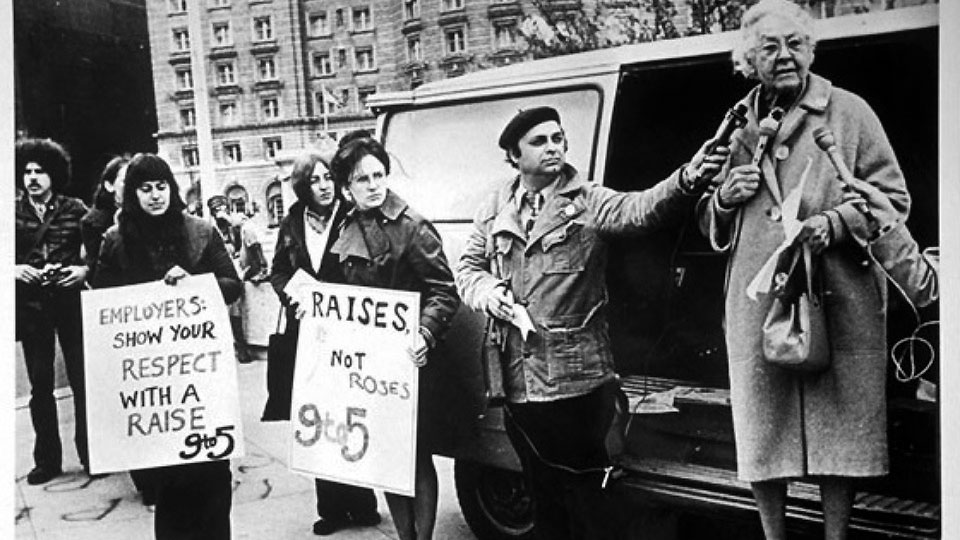
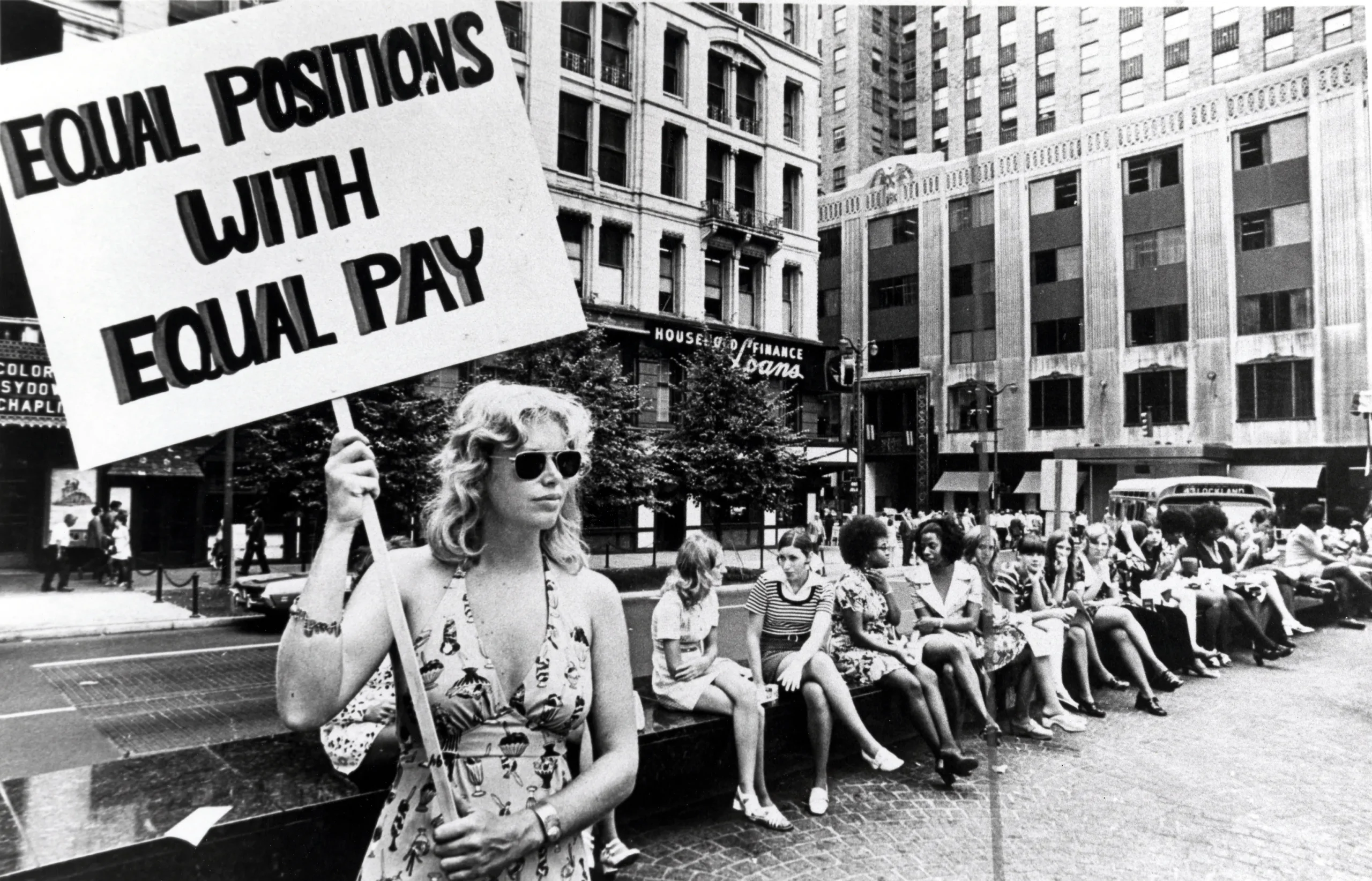
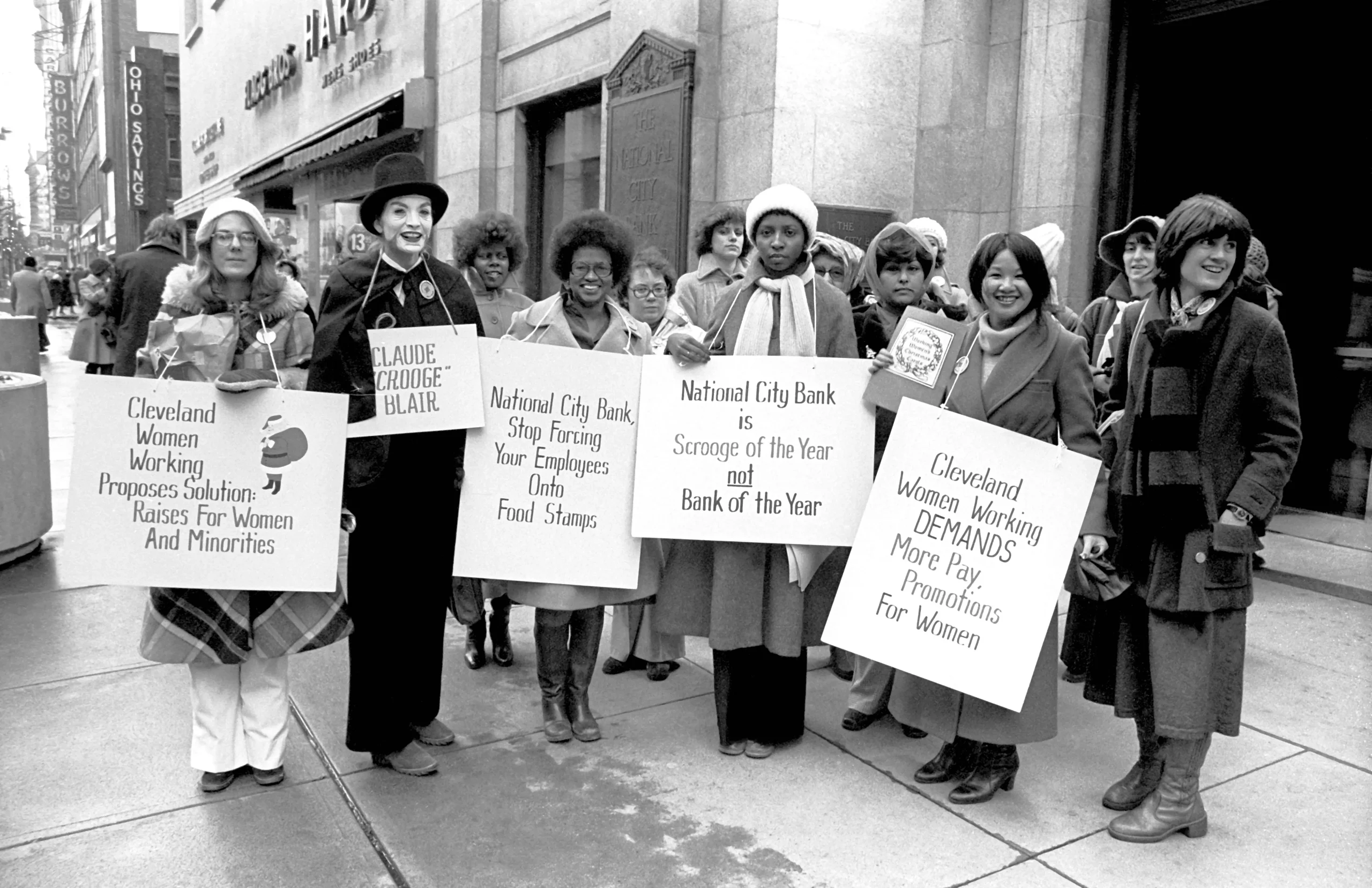

Comments are closed